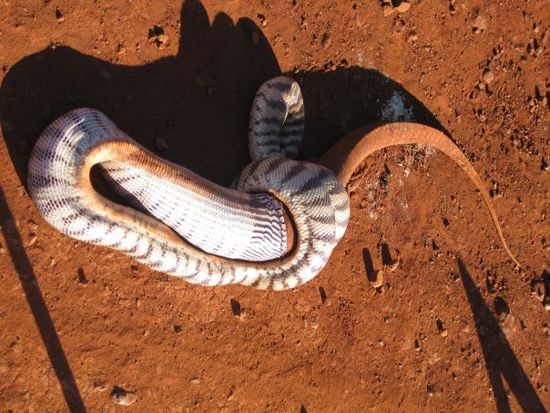|
|
Snake Eats Iguana
|
Venomous snakes that use hemotoxins usually have the fangs that secrete the venom in the front of their mouths, making it easier for them to inject the venom into their victims. Some snakes that use neurotoxins, such as the mangrove snake, have their fangs located in the back of their mouths, with the fangs curled backwards. This makes it both difficult for the snake to use its venom and for scientists to milk them. Elapid snakes, however, such as cobras and kraits are proteroglyphous, possessing hollow fangs that cannot be erected toward the front of their mouths and cannot "stab" like a viper; they must actually bite the victim.:242
It has recently been suggested that all snakes may be venomous to a certain degree, with harmless snakes having weak venom and no fangs. Most snakes currently labelled “nonvenomous” would still be considered harmless according to this theory, as these snakes either lack a delivery method for the venom or are simply incapable of delivering enough to endanger a human. This theory postulates snakes may have evolved from a common lizard ancestor that was venomous, from which venomous lizards like the gila monster and beaded lizard may also have derived, as well as the monitor lizards and now extinct mosasaurs. They share this venom clade with various other saurian species.
Venomous snakes are classified in two taxonomic families:
|
|









